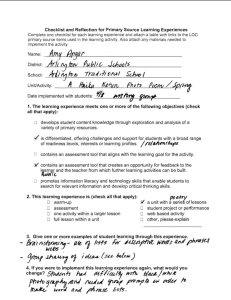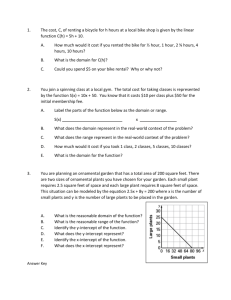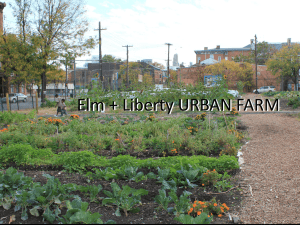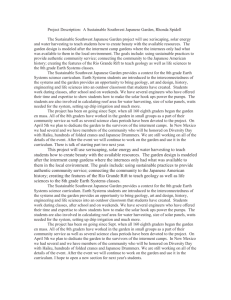Japanese Garden Exploration worksheet
advertisement
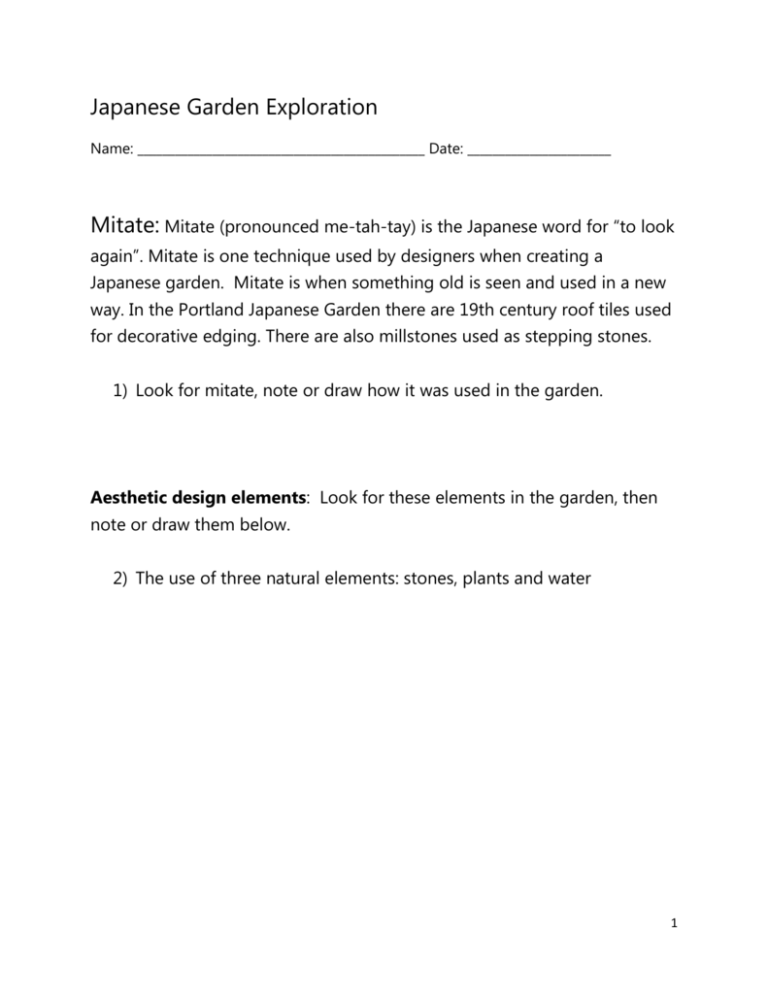
Japanese Garden Exploration Name: ______________________________________________ Date: _______________________ Mitate: Mitate (pronounced me-tah-tay) is the Japanese word for “to look again”. Mitate is one technique used by designers when creating a Japanese garden. Mitate is when something old is seen and used in a new way. In the Portland Japanese Garden there are 19th century roof tiles used for decorative edging. There are also millstones used as stepping stones. 1) Look for mitate, note or draw how it was used in the garden. Aesthetic design elements: Look for these elements in the garden, then note or draw them below. 2) The use of three natural elements: stones, plants and water 1 3) The use of asymmetry and odd number of plants and stones to achieve a natural balance 4) Simplicity: the cultural value that “less is more” 5) Symbolic use of elements: smooth river rocks to represent a stream 6) Shape, texture and color 2 Haiku Poetry 3 short lines Middle line is the longest It can be read in one long breath Avoid unneeded words Use present tense No capitalization or punctuation rules! Questions to help you write your poem in the garden: 1) Close your eyes, what do you hear? 2) Describe the pond: 3) What do the sun and shadows make you think of? 4) Describe the effect on you of all the shades of green: 3 5) Can you hear something that you can’t see? Can you identify it? 6) What does this place remind you of? 7) Can you see any reflections? How does an object look in its reflection? 8) Any surprises or things unexpected? 9) How does the air feel? The wind, dampness in the air, rain? 10) How do the footsteps on the ground sound? Can you walk on the gravel without making a sound? 4 11) Describe what you feel when looking at the colors and patterns of the koi: 12) How does it feel to sit on the ground or the stone benches at the Sand and Stone Garden? Next Step: Choose some of those phrases that relate or don’t relate and try making a Haiku. If it helps, think of the pattern: 5 syllables, 7 syllabuses, 5 syllabus for your three lines. Or just keep the middle line longer. __________________________________________________ _______________________________________________________________________ _____________________________________________________ Try another one! __________________________________________________ _______________________________________________________________________ _____________________________________________________ 5 Make Observations: You are a field scientist, take note of your surroundings. The trees at the Japanese Garden: Draw and Label the trees the best you can. Use the space below. Try a Maple tree and a Pine tree. 6 Make Observations Part II: You are a field scientist, take note of your surroundings. Write and Draw you observation about a planting area. Use the space below. 7


